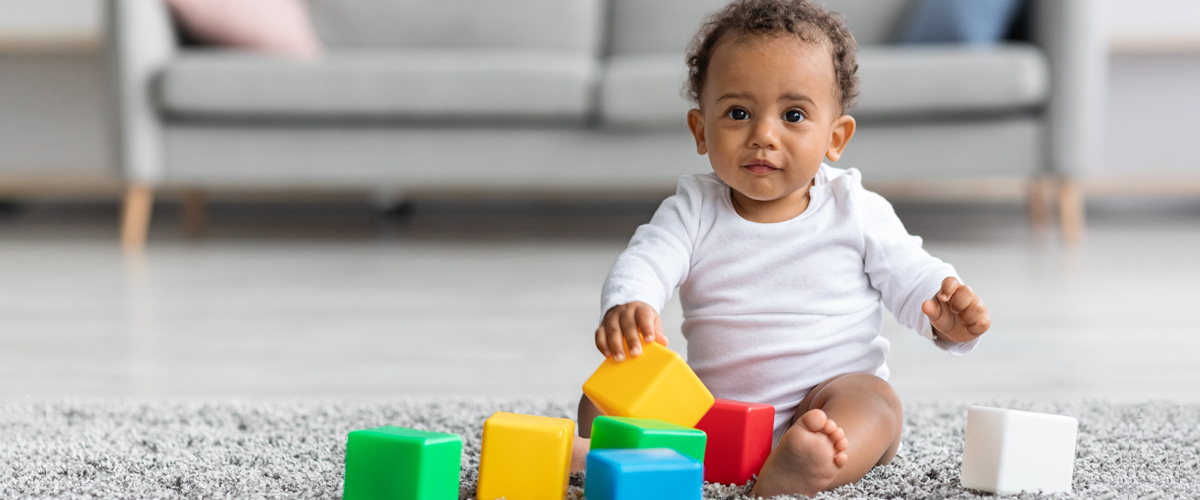What Parents Need to Know About the CDC’s New Checklists for Developmental Milestones
A developmental pediatrician shares why the CDC revised the developmental checklists for children through age 5, and how parents can use these guides in a proactive way.

Many parents may already be familiar with the Centers for Disease Control and Prevention’s (CDC’s) Developmental Milestones — a set of checklists that state what most children should be doing — such as smiling, sitting up, or walking — at various stages in their childhood. The checklists had not been updated since they were released in 2004, until now.
Together with the American Academy of Pediatrics (AAP), the CDC recently released significant revisions to those developmental lists, based on findings and recommendations from a working group of pediatric and developmental experts. The lists have been revised to reflect what is commonly expected from 75% of children at a given age, as opposed to the 50% average that was previously used. One goal of the update was for caregivers to have a clearer understanding of expectations so that they could be more proactive in talking with their pediatrician and seeking an evaluation if a child misses a milestone.

Dr. Jennifer Cross
“Milestone checklists provide a framework to parents and providers to help see when formal testing for a possible delay may be needed,” says Dr. Jennifer Cross, an attending pediatrician and a developmental and behavioral pediatrics expert at NewYork-Presbyterian Komansky Children’s Hospital. “Based on 15 years of evaluating the previous CDC checklists, a number of studies, and clinical experiences, clinicians and researchers concluded that the checklists were confusing and caused a false sense of security,” she says.
“This was because the ages on the checklist were based on when the ‘typical’ child reached this milestone, or the 50th percentile, which meant that half of all children would not meet the milestone by that specific time,” says Dr. Cross. “The current checklists have been revised to be more helpful, with the decision to move the age levels to those at which 75% of children would have been expected to accomplish a certain milestone. The hope is that parents and clinicians would move more quickly to evaluation and possible intervention for children who had not mastered the milestone outside of the average range.”
In addition to that change, there are also now checklists and proactive tips provided for 15-month-old and 30-month-old children, and the lists for all ages feature anticipated actions, physical movements, and emotional responses. The AAP notes that some milestones have been moved to different ages, and some have been removed from the lists altogether.
Examples of New Milestones for 15- and 30-Month-Old Children
15 Months
- Stacks at least 2 small objects, like blocks
- Tries to say 1 or 2 words besides mama or dada, like “ba” for ball or “da” for dog
- Hugs stuffed doll or other toy
- Claps when excited
30 Months
- Uses things to pretend, like feeding a block to a doll as if it were food
- Shows simple problem-solving skills, like standing on small stool to reach something
- Names things in a book when you point and ask, “What is this?”
Dr. Cross, an assistant professor of pediatrics at Weill Cornell Medicine, shared with Health Matters six things parents and caregivers should know about the revised checklists and how to use them as constructive tools in a child’s development.
The Checklists Are Tailored to Coincide With Well-Child Visits
The addition of the 15- and 30-month milestones checklists means there are now checklists that coincide with every recommended well-visit for children ages 2 months to 5 years. “Parents should be aware that the milestones are ones that most children — or 75% of children — will perform by the age on the checklist,” says Dr. Cross. “If you see your child is missing a milestone, speaking to your healthcare provider is the best course of action.”
The Younger the Child, the More Often Parents Should Consult the Checklists
“Milestone ranges are much shorter in infancy, and longer as the child gets older,” says Dr. Cross. She recommends that parents of infants check milestones every month or two and look ahead to the next group. “This way, parents know what to watch for and can help facilitate,” says Dr. Cross. For 1- to 2-year-olds, Dr. Cross suggests checking every three months, and for children over 2 usually every six months is appropriate.
Children May Need Some Time to Practice Skills
Meeting certain milestones may require practice. Take drinking from an open cup, for instance; at 18 months, if a child has never done this before, they’re bound to spill, says Dr. Cross. “Children have to learn by practicing skills, as anyone does; but the expectation is that given practice, your child should then be able to learn how to do the skill within a few weeks,” she says.
Providers Take Premature Births Into Account
“Typically, we do allow some leeway in correcting for prematurity,” says Dr. Cross, who offers this example: “We would look at a 30-week preemie as being about two months early, so at the 9-month checkup we would make sure that he or she had met all of the 7-month milestones.”
It’s Not One Size Fits All
Personality may impact a child’s behavior. If a child is shy, for example, he or she might appear quieter. However, Dr. Cross points out, “There are 2-year-old children who may not speak to other adults but should still be speaking with their parents.”
It’s good to keep this in mind while consulting the checklists, which have different milestone markers for cognition, language, physical movement, and social emotional development. “Differences in milestones related to personality will mostly fall within the social-emotional domain, but it should not affect motor or language milestones,” says Dr. Cross. When in doubt, talking to a doctor or healthcare provider can shed more light.
Parents Should Be Proactive
For some parents, the checklists are a reassuring guide, and for others they may be a source of anxiety. Dr. Cross encourages parents to play a proactive role in their child’s development, and “play with them, talk to them, explore with them, which is much more productive than watching and worrying about them. It doesn’t necessarily stop the worrying, but doing something proactive will help,” she says.
If a child misses a milestone, it’s not necessarily a reason to panic — but know when to consult your pediatrician, says Dr. Cross. “For the most part, waiting a few weeks is not going to make a difference and the child may then master the milestone,” she says. “However, waiting a few months is not advisable. If you see your child has missed a milestone and doesn’t acquire it within the next month, I would bring it up with the child’s healthcare provider.”
Jennifer F. Cross, M.D., is an attending pediatrician at NewYork-Presbyterian Komansky Children’s Hospital and an assistant professor of clinical pediatrics at Weill Cornell Medicine. An expert in the diagnosis and management of children with developmental disabilities, Dr. Cross is board-certified in developmental and behavioral pediatrics.
Additional Resources
Check out the CDC’s milestone checklists. Print out the guide or click on your child’s age above to complete the checklist online.
Download the CDC’s Milestone Tracker mobile app.
Read more about Ages & Stages from the American Academy of Pediatrics.
Learn about the Child Development Program at Weill Cornell Medicine.
Learn about NewYork-Presbyterian’s Center for Autism & the Developing Brain.
